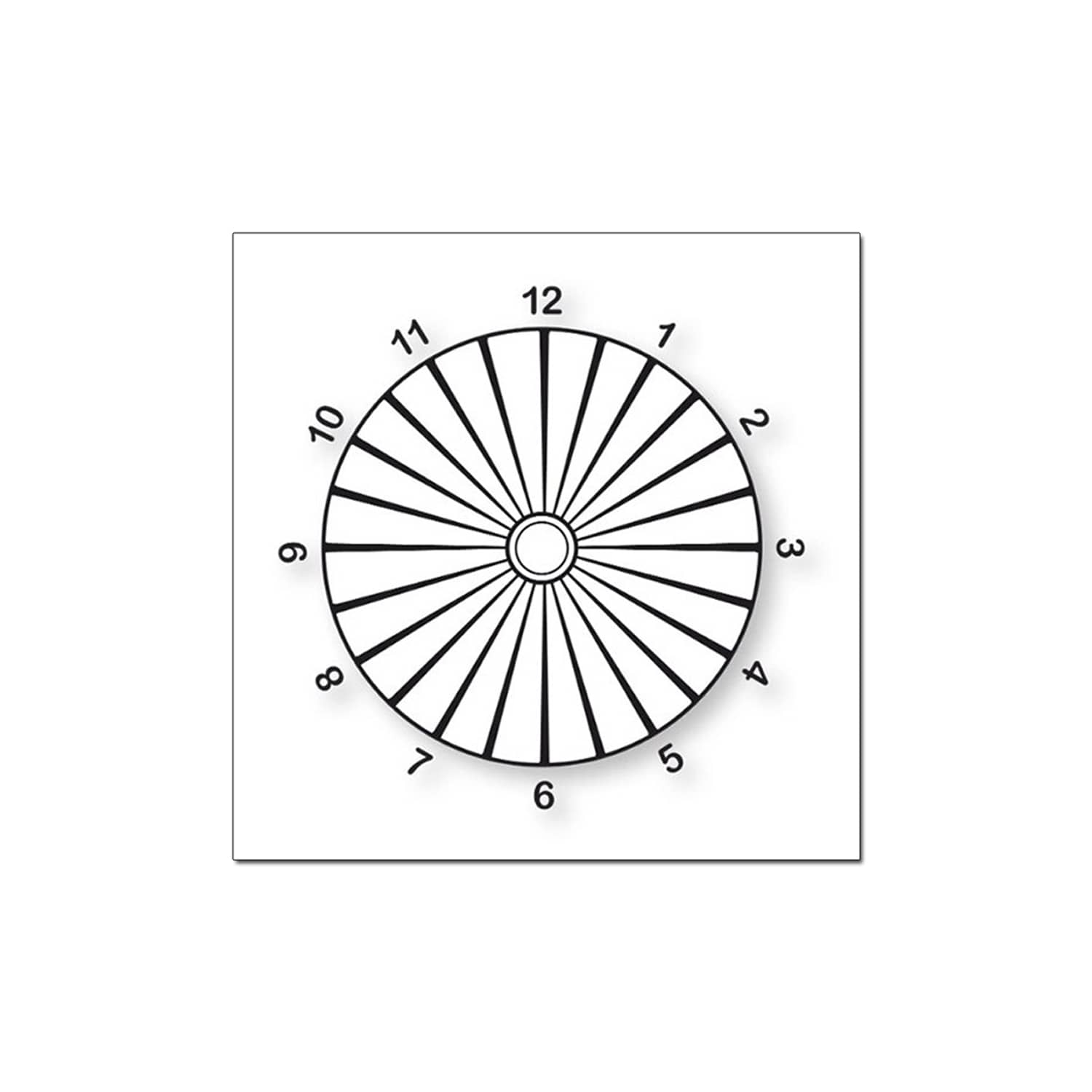Parent Dial
65,00€ excluding tax
Parent Dial
- Can detect astigmatism
- Time dial
- Direct reading at 5 m
- SKU: 88877-08
- Categories: Acuity scales
Additional information
| Weight | 0,200 kg |
|---|
How do I use the parent dial?
the parent dial, also called the hour dial, is a tool used in orthoptics to assess and note the position of the eyes in a patient with strabismus (deviation of the eyes). Here's how to use the Parent dial:
- Patient placement : the patient is placed at a comfortable distance from the examiner, usually about 6 meters. He must look straight ahead, fixing a precise point on the wall or on a visual target.
- Positioning of the dial : the examiner holds the parent dial at a distance of 1 meter in front of the patient, between the examiner and the patient. The dial is held vertically so that the position of the numbers is clearly visible to the patient.
- Eye alignment : the examiner asks the patient to stare at the center of the dial (point 0) with both eyes. He then observes the position of the patient's eyes in relation to the numbers on the dial.
- Rating : Depending on the position of the eyes, the examiner notes the corresponding numbers on the Parent's dial. The number corresponding to the deviated eye is noted first, followed by the number corresponding to the fixing eye. For example, if the right eye is deviated downward and the left eye is fixative, the examiner will score “6/0” (the 6 for the deviated eye and the 0 for the fixative eye).
- Analysis : The notations on the Parent's dial allow the direction and angle of the deviation of the eyes to be assessed, as well as the degree of strabismus. This information helps determine the type of strabismus and plan the appropriate treatment.
It is important to note that the use of parent dial should be performed by a vision health professional, such as an orthoptist, ophthalmologist, or optometrist, who is trained to interpret results and properly assess ocular deviation. The Parent Dial is a useful tool in the diagnosis and management of strabismus problems, but it should only be used by trained professionals.
Is astigmatism serious?
Astigmatism is a common vision disorder that affects the shape of the cornea or lens of the eye, causing distortion of vision. It's not usually considered a serious condition, but it can cause bothersome symptoms and affect some people's quality of life.
In most cases, astigmatism is a minor refractive problem and can be corrected with glasses, contact lenses, or refractive surgery. Common symptoms of astigmatism include blurred or distorted vision, headaches, eye strain, and difficulty seeing clearly near and far.
In rare cases, astigmatism can be associated with other eye problems or more serious eye diseases. In these situations, further medical evaluation and regular monitoring by a vision health professional are necessary.
It is important to note that everyone is different and the impact of astigmatism on vision can vary from person to person. Some people may have no symptoms or be bothered by their astigmatism, while others may experience more pronounced symptoms.
If you have vision problems or symptoms related to your eyesight, it is recommended that you consult a vision health professional, such as an ophthalmologist or optometrist, to a complete eye exam and an assessment of your vision. They will be able to recommend the best correction options for your individual needs.
How to know your sight on 10 astigmatism?
To find out about your eyesight with astigmatism, you need to see a vision health professional, such as an ophthalmologist or optometrist. These professionals will perform a complete examination of your eyes to determine the extent and severity of your astigmatism, as well as any other possible vision problems.
During an eye exam, the professional will use various tests and instruments to assess your visual acuity and the quality of your vision. They will also be able to measure the curvature of your cornea and the way light focuses on your retina to diagnose and quantify astigmatism.
The exam result will tell you the level of correction you need to improve your vision. If you are diagnosed with astigmatism, the professional will prescribe glasses, contact lenses or other corrective solutions adapted to your needs.
Seeing a vision health professional regularly for eye exams is essential, especially if you experience vision problems or have a family history of eye disorders. This will help catch any eye problems early on and get the right care to keep your eyes healthy.





